19+ Movies About Snuff Films
The idea of snuff films has intrigued and horrified people for decades. Here are the best movies that capitalize on our collective disgust for snuff.

Table of Contents
The most commonly accepted definition of a “snuff” film is one that depicts an actual human murder (or suicide) and was produced for profit. According to experts, there has never in human history been a film that fits this technical definition. There are plenty of videos available online that depict actual murder and suicide, but they were either released for propagandistic or sensationalistic purposes rather than produced and marketed for profit.
The following films are all fictionalized movies that feature the concept of snuff movies. The first section includes traditional, narrative-style movies where a snuff film is used as part of the plot. The second section includes even more gruesome depictions of snuff in which the filmmakers use found-footage-style techniques to make it appear as if the movie itself is an actual snuff film (though, again, it’s all fiction).
Movies About Snuff Films
Hardcore (1979)
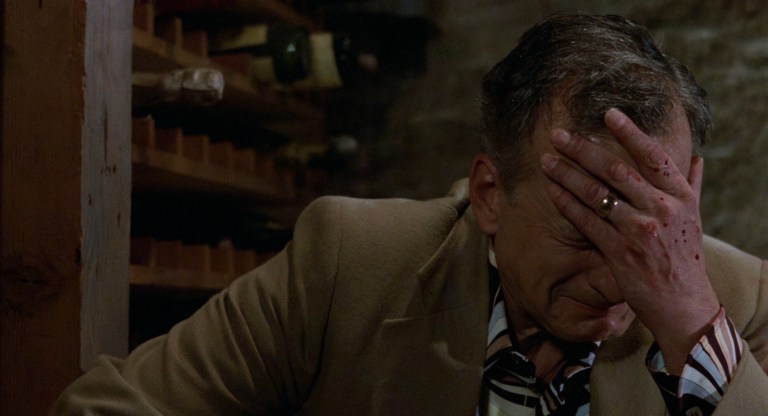
In this procedural thriller by writer/director Paul Schrader (who also wrote the screenplay for Taxi Driver), George C. Scott plays Jake Van Dorn, a strictly Calvinist businessman from Middle America whose teenage daughter mysteriously goes missing during a church youth group trip to California. Van Dorn hires a private investigator to find his daughter. The only thing the detective finds is evidence of Van Dorn’s daughter starring in a low-budget pornographic film. This sends Jake into Southern California’s seedy world of drugs, porn, and prostitution in the hopes of finding his daughter, and his search leads him to believe his daughter may have become the victim of a snuff filmmaker. Hardcore is said to have been a major influence on Joel Schumacher’s 1999 film 8MM (reviewed below).
Videodrome (1983)
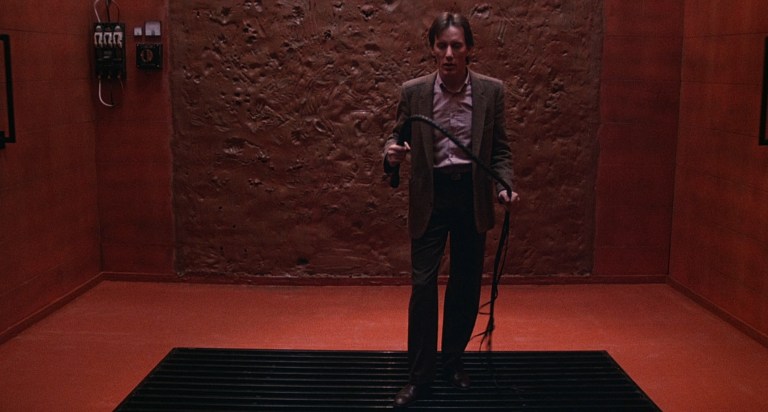
In this futuristic body horror film by writer/director David Cronenberg, James Woods stars as Max Renn, owner of a small TV station on the UHF dial. His programming largely consists of pornography, which Max justifies as the only way to make his station profitable. But while searching for alternatives to porn, his assistant finds a satellite feed of something called “Videodrome,” a station that broadcasts sexual torture and what appears to be actual murder. But Max soon learns that Videodrome is some sort of psychological operation designed to induce brain tumors in whomever views the station for too long. The film stars rock star Deborah Harry of Blondie fame in one of her first movie roles.
Benny’s Video (1992)
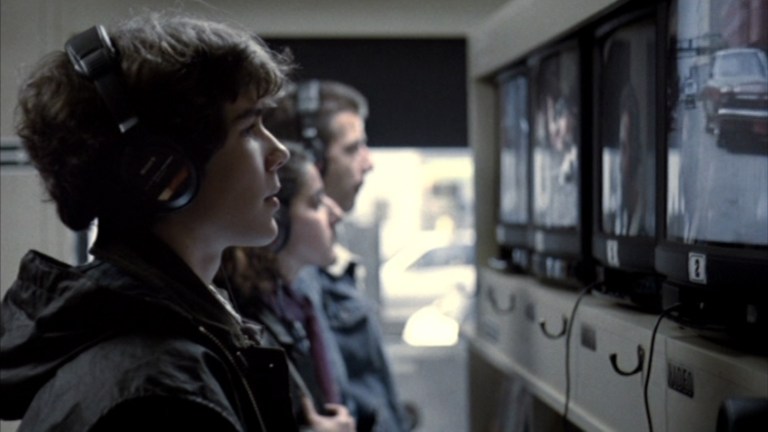
Benny’s Video is a fabulous movie about a teenage boy, Benny (Arno Frisch), who creates a video of himself killing a girl. While Benny’s video may not be a snuff film in the strictest definition (since it wasn’t made for profit), Benny does show the video to his parents. What ensues is a family drama mixed with a psychological thriller about the effects of violence in mass-consumed media.
Mute Witness (1995)

Billy Hughes (Mary Sudina) is a mute (but not deaf) makeup artist who is working on a slasher film in Moscow when the janitor accidentally locks her in the studio after hours. To her horror, Billy sees two Russian actors brutally kill a woman while filming it. Billy tries to run but knocks over a coat rack while retreating, setting the perpetrators on her trail and making her the target of an underground snuff film ring. Part of the film’s true horror is wrought from the fact that to Billy, the crimes she’s witnessed are literally unspeakable given the fact that she’s unable to speak.
Thesis (Tesis, 1996)

Ángela (Anna Torrent) is a college student in Spain who is working on a thesis about death and violence in the movies, which naturally leads her toward investigating whether snuff films exist. She befriends a female student named Chema (Fele Martinez), who shares Ángela’s obsession with film violence. When they uncover an actual snuff film and slowly realize that the victim being murdered was a student on their campus, their lives quickly get complicated. Blu-Ray.com writes, “What gives the film its identity…is its willingness to step into an area that is genuinely dangerous. But — and this is precisely the reason why it continues to work as well as it does — once there, the film lets the viewer imagine the worst. As a result, the black hole that typically consumes other similarly themed films, and in particular exploitation films, is effectively avoided.”
8MM (1999)
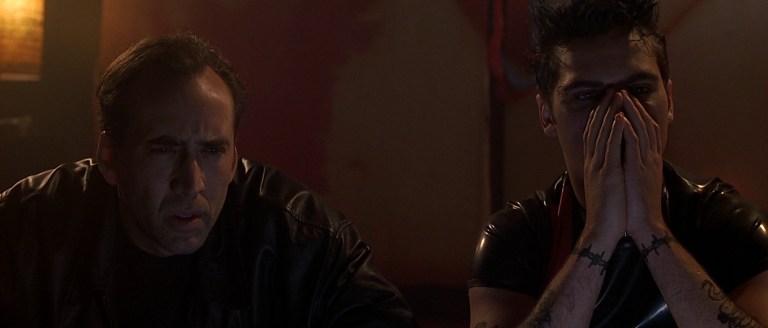
Tom Welles (Nicolas Cage) is a private investigator who’s hired by a wealthy widow whose husband has recently died. In her husband’s safe, she’d found an 8MM reel that depicts a young girl getting brutally murdered. Welles’s investigation takes him into Hollywood’s porn underworld, where an adult-video-store clerk named Max California (Joaquin Phoenix) leads him to a talent scout named Eddie Poole (James Gandolfini), who introduces him to an eccentric director named Dino Velvet (Peter Stormare), who films incredibly violent porn movies starring a masked actor known only as “Machine” (Chris Bauer). Roger Ebert writes, “Joel Schumacher’s ‘8mm’ is a dark, dank journey into the underworld of snuff films, undertaken by a private investigator who is appalled and changed by what he finds. It deals with the materials of violent exploitation films, but in a non-pornographic way; it would rather horrify than thrill.”
My Little Eye (2002)

A group of five people accept a challenge—they have to live together in an isolated mansion for six months as surveillance cameras track their every move. If even one person leaves, none of them gets a penny. As the deadline approaches, strange things start happening. One member’s beloved grandfather dies, and he’s forced to choose between financial gain and familial loyalty. Then one of the housemates wakes up to find her pillow covered in blood. And a mysterious package arrives with a loaded gun. Are they being tested? Spoiler: The five people were never meant to leave, and the whole challenge was always intended to be a webcast snuff video. Fangoria writes, “It’s TV’s Big Brother gone horrific….My Little Eye is one of those rare films that takes you beyond wondering whether any of the characters will get out alive to a point where you question whether you’ll come away with your nerves intact.”
Vacancy (2007)
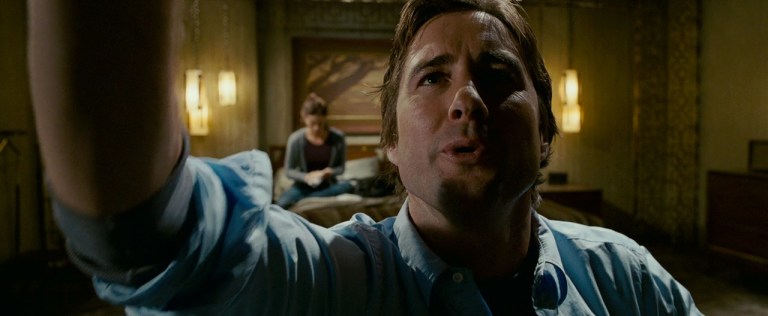
David (Luke Wilson) and Amy Fox (Kate Beckinsale) are a married couple on the verge of divorce. As they drive through an unspecified rural area in the American West one night, David swerves to avoid a raccoon in the road, which leads to his car breaking down. They walk a mile and find a motel that makes the Bates Motel from Psycho look wholesome and welcoming. Since they can’t find any TV signal in the room, David pops in some VHS tapes that feature graphic footage of people being murdered. David then realizes that all of the tapes were filmed in the motel room in which they’re staying. When they try to escape, they realize to their horror that they’re trapped. Reel Views writes, “The movie plays on common human fears: loud noises in the night, a ringing phone with no one at the other end, claustrophobia, rats and roaches, and a sense of profound isolation.”
A Serbian Film (2010)

Filmed in Serbia but banned in at least 46 countries, A Serbian Film has been called “the most disturbing movie of all time.” The plot involves a financially strapped and semi-retired porn star who agrees to act in an “art film.” But he didn’t realize that the “art film” is actually a snuff film that will involve murder, necrophilia, and the rape of a newborn baby. The film’s producers also didn’t inform him that he’d be drugged into oblivion and wake up covered in blood after having performed the vilest acts imaginable. It is later revealed that the snuff film’s director is a former psychologist who used to work in children’s television and state security. Japanese censors found the film so objectionable that they slapped it with the only R20+ rating in the nation’s history, meaning no one under 20 was allowed to see it. That’s quite a dubious accomplishment considering how many Japanese films are unbearably graphic and gory.
Untraceable (2008)

Jennifer Marsh (Diane Lane) is an FBI agent from Portland, Oregon who is assigned to find and capture the proprietor of a website called KillWithMe.com, which not only livestreams murders, it kills the victims more quickly if enough people show up in the chat room. The videos, recorded in the murderer’s basement, feature a pilot who is bled to death with an anticoagulant, a news broadcaster burned to death with heat lamps, and an FBI agent who is killed by slowly being submerged in sulfuric acid. Roger Ebert writes, “As the current victim dies and the hit count climbs, we see a scrolling chat room onscreen. The comments are cretinous, stupid, ugly, divorced from all civilized standards….’Untraceable’ is made with intelligence and skill. It dramatizes the sorts of things that the anonymity of the Internet makes possible, or even encourages.”
All About Evil (2010)

Natasha Lyonne is Deborah, a shy and reserved librarian who inherits her father’s crumbling movie theater, which was a local favorite of horror movie fans. One night, in a rage, Deborah kills her abusive mother in the theater’s lobby just before a movie is about to begin. Panicked, Deborah accidentally screens security footage of the murder she just committed for the theaters patrons. Thinking it’s just a movie, the crowd loves it, and Deborah then gets the idea to prolong her success by creating a series of more elaborate snuff films for her theater. Cassandra Peterson, better known as “Elvira,” plays against type as a kind and compassionate mother. Jade and Nikita Ramsey star as the “twins of evil.”
Movies Made to Look Like Real Snuff Films
Snuff (1975)
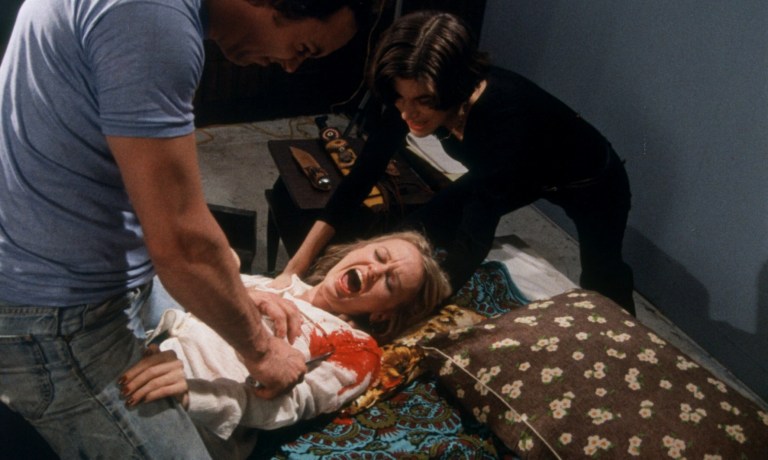
As urban legends emerged in the early 1970s that South America was Ground Zero for a purported snuff film “industry,” producer Allan Shackleton saw a chance to make some money. He purchased the rights to a 1971 low-budget Argentinian exploitation film called The Slaughter, removed the opening and closing credits, and tacked on a completely unrelated ten-minute closing scene in which the alleged “director” of The Slaughter flips out and kills one of the female actresses, disemboweling her while being filmed by a cameraman. Shackleton then marketed his new creation as a legitimate “snuff” film and garnered tons of publicity as a result.
Protests led the New York State District Attorney to investigate whether the film was actually a snuff film, only to conclude that it was a hoax. Regardless, in the first three weeks after its release, Snuff made $300,000 on a budget of only $30,000. It even outgrossed the top film in the country at the time, the award-winning One Flew Over the Cuckoo’s Nest. Calling the film “Pure Poison,” The New York Times wrote, “There is a patch of antimatter on Times Square into which not only public decency disappears, but reality as well. It is a repulsive put‐on film called ‘Snuff,’ and it is housed at the National Theater….The ads claim, for instance, that only in ‘Latin America, where life is cheap, could such a film be made.’”
Cannibal Holocaust (1980)
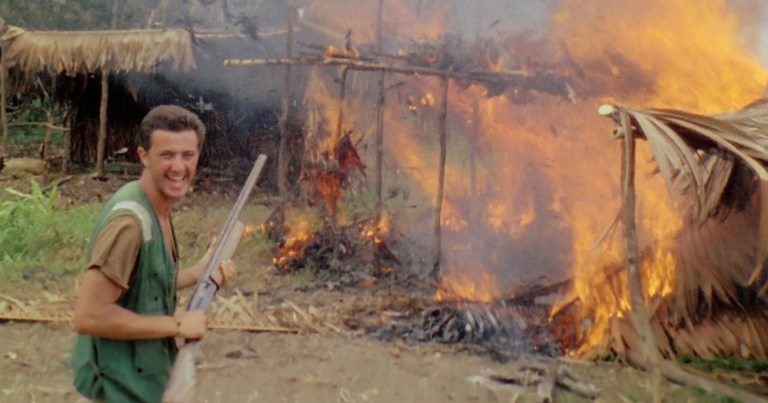
Cannibal Holocaust is notorious for many reasons, not the least of which being that, around the time of its release, some people thought it was a snuff film. The movie is about anthropologist Harold Monroe (Robert Kerman) as he ventures deep into the Amazonian rainforests to discover what happened to a missing documentary film crew. Cannisters of film are found that show the crew’s heinous actions of mass murder as they, among other atrocities, torch a hut full of natives just so they can make their documentary more interesting.
Monroe’s part of the story is presented as a traditionally shot and edited movie, but the footage of the missing film crew is all presented in an early example of found-footage which effectively makes it a pseudo-snuff film. It was so well-made that people believed that at least some of the human deaths caught on film were real. They were not real (which director Ruggero Deodato had to prove in court), but as a warning to the curious, there are multiple scenes containing animals being killed for real.
Guinea Pig: Flower of Flesh and Blood (1985)

The second of the films in the Japanese Guinea Pig series, Flower of Flesh and Blood contains threadbare “plot” that involves a Japanese woman who is abducted late at night. She wakes up in a blood-soaked dungeon where her samurai-helmeted captor slowly carves and mutilates her still-alive (and drugged) body to turn her into a “flower of flesh and blood.”
The film was so realistic, at least to actor Charlie Sheen, that in 1991, he contacted the FBI and alerted them that it was a real snuff film. Sheen had only seen clips of the film in a compilation video, presumably on degraded VHS, and the FBI concluded it was a hoax after the film’s producers showed them background footage of how the film was made. Flower of Flesh and Blood was initially blamed as an inspiration for Japanese serial killer Tsutomu Miyazaki (who murdered a string of preschool girls in the late 1980s), but it was later revealed that Miyazaki owned a later films in the Guinea Pig series among countless other horror and anime tapes.
August Underground (2001)
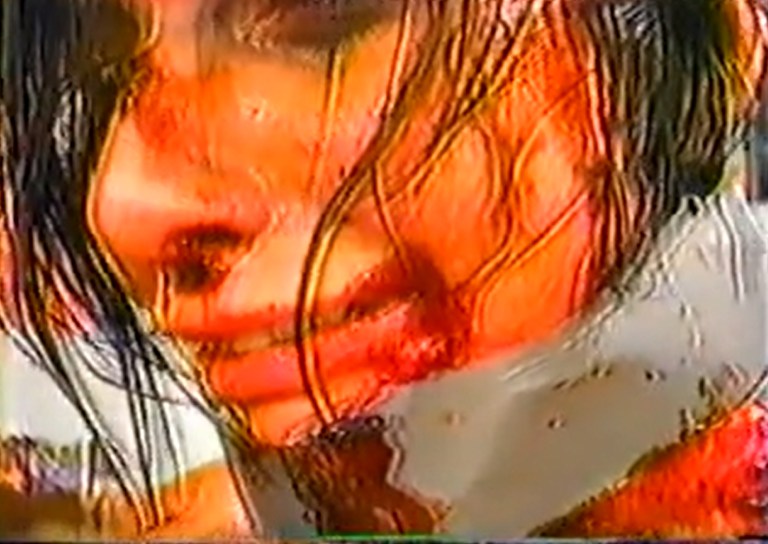
August Underground is found-footage in its purest form. The video quality is terrible, a story is practically non-existent, and the “shaky cam” people often complain about in found footage is out of control. The movie is a disturbing collection of footage of murder, torture, and mayhem perpetrated by a man named Peter (played by director Fred Vogel) and his camera-operating friend (Allen Peters). The movie really does feel like something a serial killer might record for his own amusement, and, since it was “found” and sold for profit, that makes it a (fictional) snuff film.
Sunken Danish (2012)
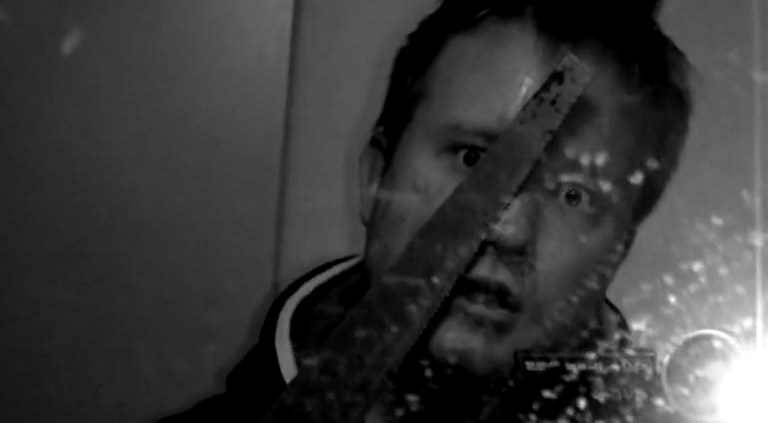
Sunken Danish is a pseudo-snuff film from Denmark by filmmaker Kasper Juhl. Like most of these types of movies, the premise is simple: two guys record their spree of murder and torture. Juhl says he was inspired by the extreme films of Fred Vogel (August Underground) and Lucifer Valentine (Vomit Gore Trilogy), with E. Elias Merhige’s surreal film Begotten (1989) as another influence on his work. Juhl became known for his transgressive movies, and he went on to create other extreme features such as Madness of Many (2013) and Monstrosity (2014).
American Guinea Pig: Bouquet of Guts and Gore (2014)
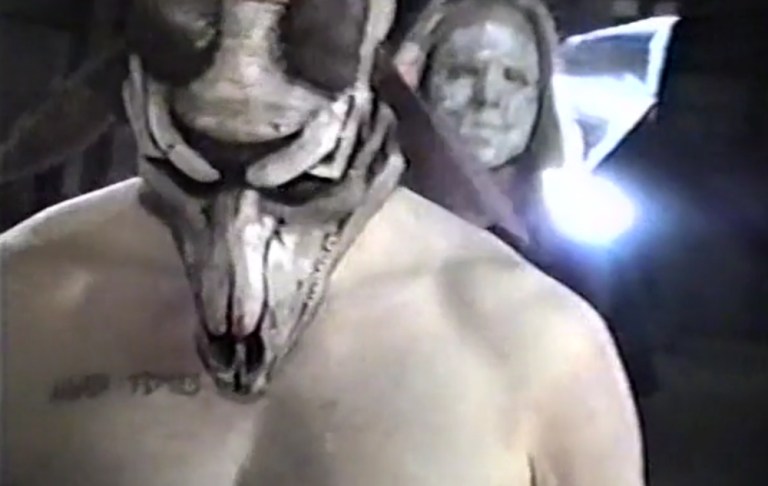
Two young women named Erika and Amy are kidnapped by a secret cabal of snuff filmmakers, who drug them and chain them to a table and force them to endure unimaginable tortures as cameras film every last indignity. Their main tormentor is a huge masked beast known only as “The Actor.” Horror News writes, “To say this is disturbing is an understatement. Let me paint you a picture: two women and chained down to tables by their throats. A long table covered with an assortment of tools, weapons, drugs, and video equipment is at their feet….The women are butchered one by one…with the help of a drug that numbs them and a few drops of LSD that takes their minds elsewhere.”
Atroz (aka Atrocious, 2015)
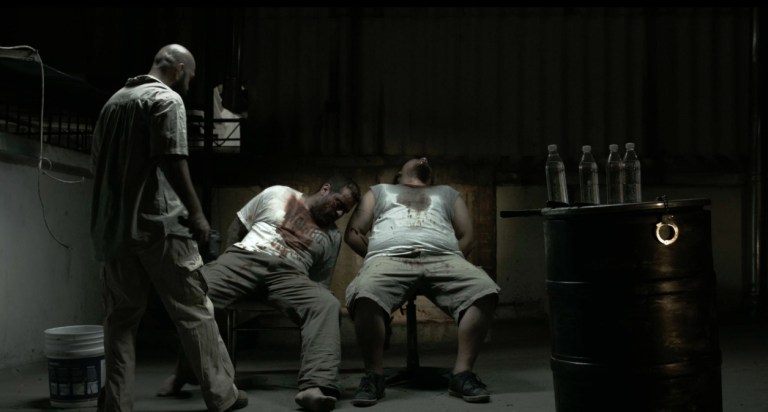
Ruggero Deodato, the director of Cannibal Holocaust, was an associate producer on Atroz, and his influence shows. Atroz is a Mexican extreme-horror film about a pair of murderers who have a habit of recording their deeds. The men are caught by police, and as the authorities view the tapes of their crimes to scour them for clues, the audience is also forced to watch. So, with the way the film is structured, Atroz is essentially a found-footage anthology film (made up of the killers’ snuff videos) framed by a more traditionally-shot crime thriller (the police investigation). Certain scenes in Atroz get extremely graphic, so proceed with caution if you’re curious.
Red Rooms (2024)

A techno-savant/model, Kelly-Anne (Juliette Gariépy), is obsessed with the highly publicized trial for a man accused of murdering three young girls on a dark web livestream. She sleeps on the street in order to ensure she is one of only a few members of the public allowed to sit in and view the trial, where she befriends the accused man’s groupie, Clémentine (Laurie Babin). As the prosecutors struggle to prove the man’s guilt, Kelly-Anne decides to get involved.
More Movies About Snuff Films

- Peeping Tom (1960) – In a movie that predated Psycho by a few months, a photographer with a knife attached to his camera tripod enjoys filming the expressions on women’s faces as he kills them.
- Last House on Dead End Street (1977) – A recently released convict takes revenge on society by making snuff films.
- Emanuelle in America (1977) – A sensual photojournalist travels to America and uncovers a snuff-film ring among rich Republicans.
- Bloodline (1979) – Also released as Sidney Sheldon’s Bloodline, this film tracks a wealthy heiress who encounters unforeseen danger when she begins to investigate her father’s death.
- Effects (1979) – A low-budget horror film being made in a remote location suddenly becomes more like a documentary.
- Strange Days (1995) – In this cyberpunk thriller from director Kathryn Bigelow, a former cop and current street hustler dives into a seedy world of drugs and snuff.
- The Brave (1997) – An impoverished Native American agrees to star in a snuff film to help lift his family out of poverty. Directed by Johnny Depp.
- Tumbling Doll of Flesh (Niku Daruma, 1998) – A porno shoot in Japan devolves into a nightmare of torture and murder.
- Snuff-Movie (2005) – After his wife is murdered, a horror director turns to making snuff films.
- Live Feed (2006) – This odd, low-budget mixture of action-crime-thriller and splatter-horror movie is about a group of friends who visit a grimy movie theater and end up as the stars of an in-house snuff film production.
- S&Man (2006) – Ostensibly a documentary about underground horror and its effects on people, this pseudo-documentary contains interviews from real indie filmmakers and horror academics while incorporating a fictional element about a director, Eric Rost, who creates what are suspected to be real snuff films.
- The Poughkeepsie Tapes (2007) – This pseudo-documentary chronicles the hunt for a serial killer through the tapes of his murders which are discovered by police.
- Snuff 102 (2007) – A female reporter starts researching whether snuff films are real and winds up wishing she hadn’t.
- The Butcher (2007) – Snuff producers strap cameras to their victims’ heads so viewers can experience the action from the perspective of the killers and of those being killed in this South Korean found-footage pseudo-snuff film.
- Cut! (2014) – After a tragic mishap during the filming of a horror movie, the filmmakers decided they’d wanted to make snuff movies all along.
- Be My Cat: A Film for Anne (2015) – The main character in this found-footage gem doesn’t set out for his video to be a snuff film, but when his deranged plea to Anne Hathaway to convince her to be in one of his movies goes fatally wrong, the final result certainly feels like snuff.
- Hope Lost (2015) – A Romanian woman is trafficked into prostitution by the promise of being on television, and she eventually ends up being sold for use in a snuff film.
- A Classic Horror Story (2021) – This Italian movie is about a group of people using a rideshare app who get stranded in the woods and become human props for a snuff movie.
- Barbarian (2022) – Frank, the killer hiding in the underground tunnels, recorded his murders on VHS so he could watch them later.
Frequently Asked Questions
What is a snuff film? what is a snuff video?
What snuff films are on Netflix?
Do any movies actually have real death scenes in them?
Other movies may use stock news footage that contain real dead bodies, though they will often stop short of showing the actual act of killing. Rambo (2008) is an example of this, showing graphic clips of real dead bodies and violence as the movie begins.
Documentaries are another exception to the “no actual death” rule. The 1997 documentary SICK: The Life & Death of Bob Flanagan, Supermasochist shows performance artist Bob Flanagan in his dying moments, followed by still images of his dead body.
In a related yet much more sensationalistic way, shockumentaries and mondo movies may show real death, though the authenticity of what is shown is often up for debate. Faces of Death (1978) uses news footage of real fatal accidents, but most of the more grisly moments are faked. One notable example of a real and graphic on-screen killing is in the 1966 mondo film Africa Addio (aka Africa: Blood and Guts). In the movie, a prisoner is shot and killed right in front of the camera.
With the advent of social media and technology that enables nearly everyone to make and post videos online, there are several cases of videotaped murders making their way online. Examples include jihadist decapitations, Mexican cartel killings, and livestreamed murders by mass shooters.
